'Every seat the Congress gets above 100 will keep pushing the Modi-Shah BJP lower in the dangerous sub-200 zone,' points out Shekhar Gupta.

Madhya Pradesh Chief Minister Kamal Nath is the latest, and, so far, the most senior Congress leader to indicate a target for his party in these general elections.
The Congress, he said, echoing what the party's data chief Praveen Chakravarty had said a while back, would triple its tally from 2014.
Then, Kamal Nath also laid out his party's central objective for 2019.
This number, he said, would be enough to deny Narendra Damodardas Modi a second term.
Not surprisingly, this drew immediate derision, even more from Congress supporters than the BJP's.
The party must be nuts to not even claim it is going to get enough numbers to form the new government.
That this is being defeatist midway in the campaign.
Further, that three times 44 is merely 132.
If the Congress itself has limited its sights to 132, it would struggle to get past 100.
These objections are factually correct and politically fallacious.
Here is how. Today, if the BJP reaches 200, it will definitely form the next government.
The only way to stop it is to keep it well below 200.
Draw a 'scissors' graphic for the BJP and Congress for 2019.
If for the BJP, especially the Modi-Shah BJP, the minimum target is 200, they will watch the point where the two arms of the scissors intersect.
That, is where the Congress reaches a mere 100.
If the Congress reaches three figures, the BJP begins looking at a number below 200.
Every seat the Congress gets above 100 will keep pushing the Modi-Shah BJP lower in the dangerous sub-200 zone.
Just to idiot-proof this so that I am not misunderstood, I am not saying the Congress is going to get that many.
My limited point is that at 100, the Congress crosses a vital threshold.
And 132, thrice the 2014 tally, can quite likely deny Mr Modi a second term.
Remember that 132 is just a dozen below the number at which the Congress was able to stitch together UPA-1 in 2004.
Once again, for heaven's sake, I am not saying it will happen.
My limited submission is, don't scoff at 132.
Review the numbers of 2014.
Of the BJP's 282 seats, as many as 167 came in constituencies where the Congress finished second.
In other words, the Modi wave was mainly built around the BJP's total destruction of the Congress, which came down from 206 to 44, almost all its losses going to the BJP.
Another 38 were taken by the BJP from the SP and BSP in Uttar Pradesh.
If the Congress were to reach 100 now, it would have wrested about 60 back from the BJP.
Given that the BJP is expected to forfeit to the SP-BSP alliance what it took from them in 2014, this could be decisive.
Yet again, my third anticipatory bail application, I am not saying it is going to happen.
To understand how distant that 100-seat mark is, examine where the Congress party's 44 came from.
These were spread over 16 states.
Only in one, Karnataka, the Congress reached double figures, exactly 10.
Next were seven in Kerala.
The remaining 27 seats were scattered across 14 states on what we might call the 1-2-3 basis.
Each of these was won against the run of play, purely on the individual strength of the candidate.
Of the 167 seats where the Congress finished second to the BJP (out of 223 overall), in only 14 was the deficit less than 10 per cent of the votes cast for BJP.
Turn the knife: The number of seats with a gap between 10 and 15 per cent was just six.
Any psephologist worth his calculator would tell you that a 10 per cent swing back is like reversing a landslide.
As for the rest of the seats, the gap goes up to 75 per cent.
Let's take a step back to see how this puts the party's recent wins in Chhattisgarh, Madhya Pradesh and Rajasthan in perspective.
It did succeed in reversing that 2014 landslide.
So, it can attract that kind of voter-base in these states.
For the party to get to that magical century mark, it must get at least 30 seats in these three states.
Given its large lead in Chhattisgarh, the party can probably expect a robust number there.
But, it would be way too optimistic to expect 25 seats in Madhya Pradesh and Rajasthan.
A Lok Sabha vote for or against Mr Modi may not reflect the state assembly numbers.
That's the state of play at the mid-point of this election.
This election is still open.
While Uttar Pradesh has received most of the attention, the issue will finally be settled in Madhya Pradesh, Rajasthan, Haryana, Himachal Pradesh, Uttarakhand, Maharashtra and Jharkhand, Assam and other states where the BJP and Congress come up directly against each other in nearly 150 seats.
Mr Modi and Amit Anilchandra Shah know that the Congress is the only party that can deny them power.
This answers the question asked often in this campaign: Why does Mr Modi concentrate his attack on the Congress even where the party isn't his main rival? It is as important for him to keep the Congress below 100 as much as it is for his rivals to limit him below 200.
If 132, three times the 2014 tally, was the number to deny Mr Modi a new term, it would have looked likely three months back.
But how has the Congress approached that target then on? Has it shown the focus, resolve, organisation and decisiveness to get there?
This brings us back to a late-night drive on an empty desert highway on our way back home from the southern Haryana town of Dabwali, where we journalists had gone to cover a massive hooch tragedy in 1980.
Some of us had taken a ride back with Devi Lal, then an Opposition leader.
Suddenly the driver jammed his brakes to avoid a hare caught in its headlights.
But too late.
The hare jumped one hesitant step right, one left, and was caught under the wheels.
Devi Lal told us a story.
He said the same thing had happened once when he was driving with Partap Singh Kairon, the formidable chief minister of undivided Punjab who he used to assist as a political aide.
He said Kairon too stopped the car and told him, 'Chaudhri, tu dekhiyo (you will see), this is what will happen to Nehru.'
You have to go left or right.
Nobody can survive indecision.
Apply the same test to the Congress, now run by Nehru's third generation descendants.
From aligning with the BSP/SP in Uttar Pradesh to AAP in Delhi, far from reaching out to Mamata Banerjee and even KCR and Naveen Patnaik in Odisha, to make common cause whatever the price, disciplining its troops to back JD-S candidates fully in Karnataka instead of fighting with them, and now Priyanka Gandhi's to-be-or-not-to-be and finally it-was-never-to-be in Varanasi, what has Rahul Gandhi's Congress looked like? A hare caught in the glare of headlights.
If the excuse is that the party has to rebuild itself for the future, it's a touching fantasy.
Because, in politics as in cricket, you do not ruin your first innings because you want to play the second better.
The party should take the cue from Manmohan Singh, who, intervening in the Parliament debate on demonetisation, had said, invoking Maynard Keynes: In the long run, we are all dead.
In this case, the risk is being run over even in the short run.
By special arrangement with The Print


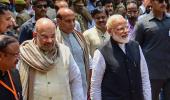
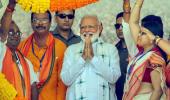
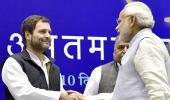
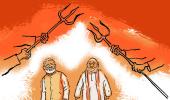



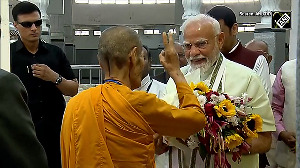
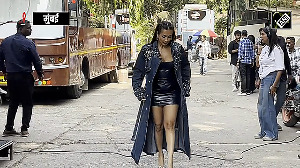

 © 2025
© 2025